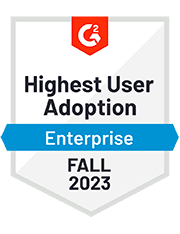The talent war is raging on and you’re running out of ammunition. The situation is critical, but not hopeless. Dig deep into your pockets and you’ll find the perfect weapon – your smartphone. Still little used by companies, mobile recruitment strategies are becoming a powerful HR driver for attracting the best talent.
The first businesses to have taken the leap towards innovation and adopted this new form of recruitment are already winning awards. That’s why we’ve decided to demystify this new shift and explain how you can take full advantage of it. After m-commerce and m-banking, the age of m-recruiting has arrived.
To attract the best talent, the smartphone is an essential tool
Talent recruitment will be the biggest challenge of the next decade for HR departments. How can this challenge be overcome? One word – mobile. That’s what we learn from the survey carried out in 2015 by the IBM Smarter Workforce Institute. IBM teams questioned 16,000 people from 23 different countries, including representatives of a wide range of business sectors, types of organizations, and positions. They then separated them into two distinct groups based on their performance levels at work – high-potential employees (top talent) and the rest.
There’s no questioning the results of the survey. To recruit the best talent, mobile phones are going to become essential. Among top talents:
- 74% already use their mobile in job searches, compared to 40% of others.
- 69% have a higher opinion of organizations that use mobile recruitment, compared to 51% of other employees.
- 40% expect recruiters to make use of a range of mobile services (such as text messages, for example) during the recruitment process, compared to just 23% of others.
Mobile recruitment improves the candidate experience
Just as user experience is the central issue at stake in marketing, the candidate’s experience is key for HR. Especially in the current context of a talent shortfall. But mobile is also an extraordinary tool to make life easier for people looking for jobs.
Using mobile phones for recruitment is, first and foremost, a way of showing that you understand today’s candidates. People from Generation Y and Z do their shopping and manage their bank account via their smartphone. So it’s no surprise that they also use it when looking for jobs.
Improve the candidate experience to boost your employer branding
To make the experience as positive as possible, employers need to:
- save candidates time: allow them to apply for jobs while queuing in the supermarket, on public transport, or even during the ad breaks. Millennials are impatient – that’s no secret. So you’ll get into their good books by making the process of looking for job adverts and submitting applications less time-consuming.
- simplify the application process: CVs and cover letters were fine in the 90s, but that’s all over now. Gen Ys and Zs no longer want to spend hours perfecting applications that they know recruiters won’t look at for more than a few minutes. That’s where mobile enters the field. There are already apps that collect information from a user’s LinkedIn profile so they can submit a job application with a single tap.
Mobile recruitment is also a key element in the challenge of your employer brand. The easier you make life for applicants, the better their perception of your company’s image will be. But essentially, what can be done?
Mobile recruitment tools and strategies
Mobile is becoming central in major groups’ recruitment strategies. For a number of years now, applicants have been able to look at job openings using their mobile phone via job site apps (such as Monster, Indeed and Glassdoor). Already have your positions on these sites? Good, but tomorrow, that won’t be enough.
Here are four tactics you can use to win over the best talent – just with your smartphone.
Tactic 1: Use existing mobile recruitment apps
This is still the simplest option, as well as the cheapest. And it also allows you to reach a huge number of talented millennials. Here are a few ideas of apps you can use.
Let’s start with Kudoz, the French-made job-search app. As with a lot of recruitment apps, candidates use their LinkedIn profile to apply for a job with a single click. First, candidates answer a few targeting questions, and the app then suggests jobs that match their profile. All they have to do is scroll through and click on the jobs that interest them to apply. Jobr, another app, works on the same principle as Tinder: the focus is on the match between candidate and recruiter.
Another app, another concept. Blendoor uses an approach that aims to be more ethical. The app was created to increase recruitment while combating employment discrimination. It works like Jobr, except that the candidate’s name, age, sex and photo can’t be seen by the recruiter. It’s a good way to break down barriers and demonstrate a company’s openness – which is crucial when you remember that diversity is a key element in innovation and creativity of all kinds.
Mobile also improves the recruiter’s experience
Don’t forget to make things easy for recruiters. Smart Recruiters allows you to manage your recruitment easily via your mobile. Essentially, the app allows you to access candidates’ full profiles (personal information, CVs, cover letters) from your smartphone. You can call or send an email to the applicant with a click. And, after the interview stage, you can also assess candidates using the app and send a notification to your colleagues.
Tactic 2: Develop a mobile-optimized careers site
This is the bare minimum for a big group that’s looking to recruit the best talent. Without it, your job ads quickly lose visibility. Have a look at the French Army’s recruitment site for some inspiration. The French Ministry of Defence, which is constantly looking to recruit young people, has invested a lot of money in recent years to improve its employer brand. Everyone in France has seen the ad campaigns on TV and on public transport. But the army has also invested in mobile to reach young people where they spend most of their time.
Tactic 3: Use the basic features of a mobile phone
Communicating and building relationships with applicants has never been so easy, so make the most of it. Especially seeing as the closeness of the relationship between job-seeker and recruiter plays a key role in the employer brand. Don’t hesitate to take inspiration from the tools used by candidates themselves on a daily basis. Gone are the formal emails to confirm receipt of an application, to pass on information about the various stages of the recruitment process, or to set an interview date. Nowadays, all you have to do is send a text.
Tactic 4: Develop a dedicated recruitment app
Following the example of Orange and EDF, big groups are beginning to release their own recruitment apps. It’s an excellent way of showcasing your company. But it also means your employer brand has to be well developed. Otherwise no-one will download it – and your work will go unrewarded.There are a whole host of advantages to having your own app. As well as job ads, you can publish testimonials from current employees and introduce a range of professions through videos. Dr. Job, the app from BNP Paribas, even offers advice to candidates on how to prepare for the interview.
According to a major 2015 survey on recruitment methods, carried out by RegionsJob, only 7% of companies currently have a mobile recruitment app. But when they do, 71% of them are satisfied with the results. There’s a real opportunity here.
The future of recruitment is written on a touchscreen
Mobile is set to become a key step in the HR conversion funnel. After shaking up marketing departments, it won’t be long before mobile is knocking on HR’s door. Or knocking it down. Given that 60% of web traffic will come from wireless devices in 2016, there is no more room for doubt. And this is only the beginning. Conquering today’s hot topics of digital transformation and mobile recruitment is a sure-fire path to success. Not only will it give a real boost to your employer branding, but it will also give you more time for tasks with a higher added value.
What is Agorize?
Agorize is the most comprehensive innovation management platform, supported by a team of experts and community of innovators. For over a decade, we’ve been providing technology powered by a community of 5 million innovators to foster change and accelerate innovation. Our clients and partners worldwide crowdsource, evaluate and develop solutions from startups, employees, developers and students using Agorize.
We’ve helped over 300 global enterprise companies in Europe, North America, and Asia Pacific, including Enterprise Singapore, Huawei, Microsoft, LVMH, PepsiCo, Bayer, Schneider Electric, Hitachi, L’Oréal and many more by running their innovation programs.
What is an innovation challenge?
An innovation challenge, or innovation competition, is a competition organized by a company to bring forward innovative solutions. The organizer defines clear objectives and problem statements, after which innovators are invited to submit their ideas and solutions. Proposals can come from startups, employees, students or other talent that is relevant to the topic at hand. Through a process of crowdsourcing and assessing ideas, mentoring participants and developing solutions, the organization will identify the winning proposals that will be implemented. More than 300 enterprise companies have organized innovation challenges with Agorize.
Their results speak for themselves. They’ve reduced go-to-market time with internal teams, fast-tracked the development of niche solutions with the products and services of startups, created long-term strategic partnerships and brainstormed future-proof ideas with students from top universities. Overall, it accelerated their own transformation and made themselves more future-proof.










